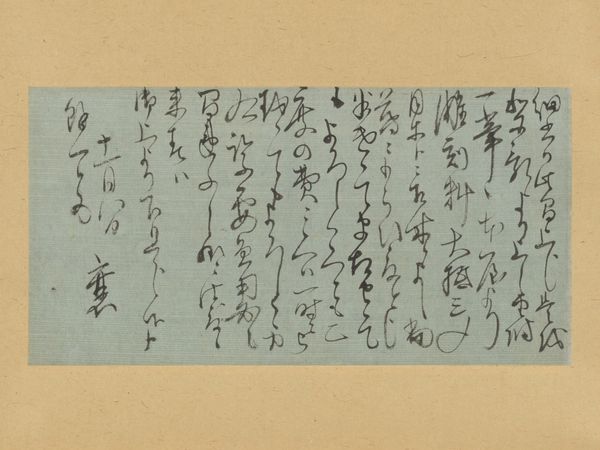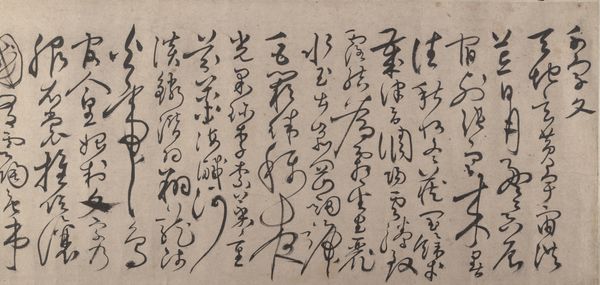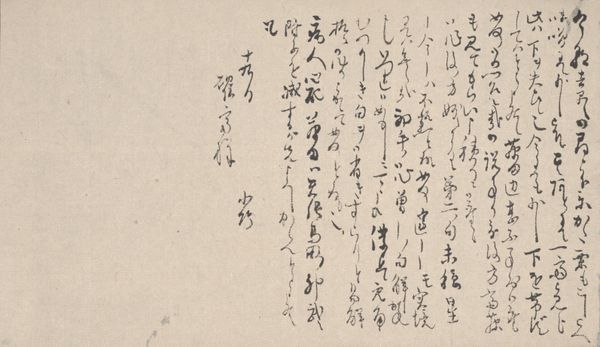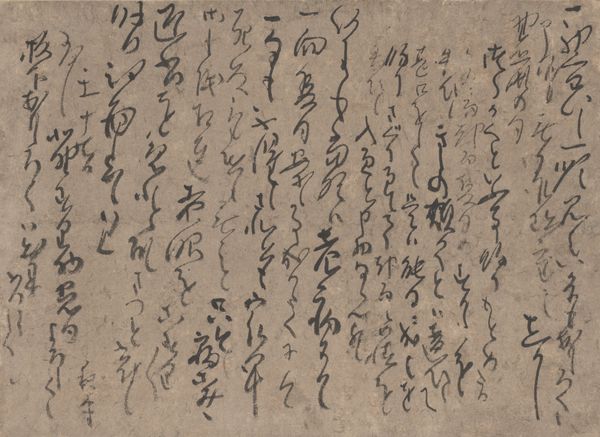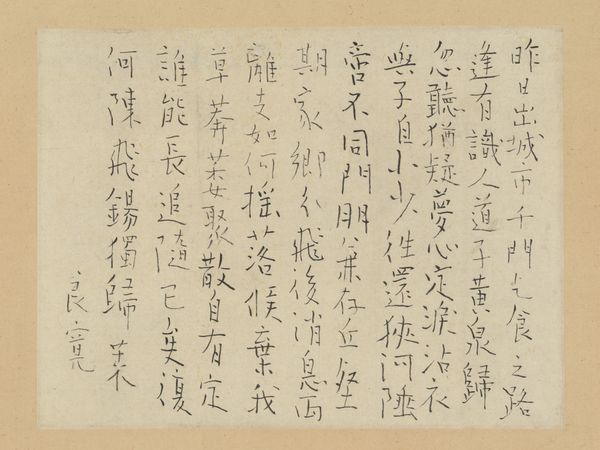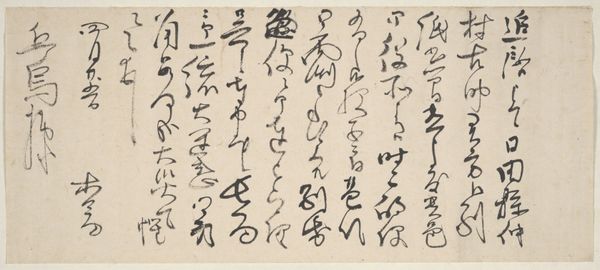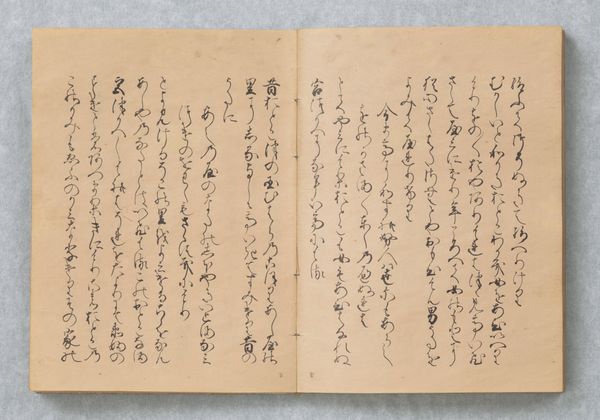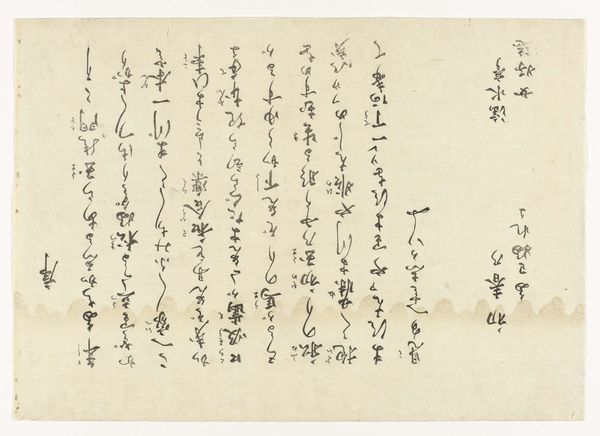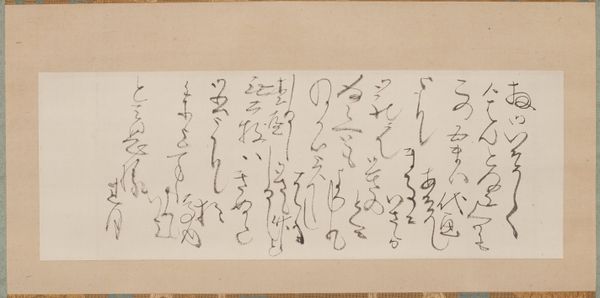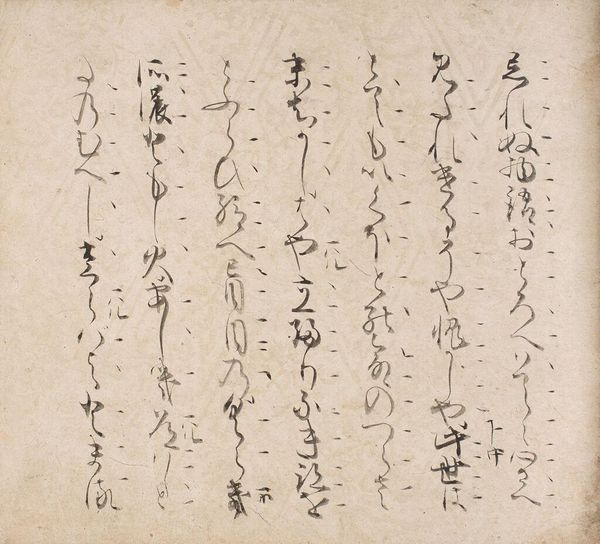
drawing, paper, ink-on-paper, ink
#
drawing
#
asian-art
#
ukiyo-e
#
paper
#
ink-on-paper
#
ink
#
geometric
#
line
#
calligraphy
Dimensions: 6 1/4 × 49 5/8 in. (15.88 × 126.05 cm) (image)11 11/16 × 60 9/16 × 7/8 in. (29.69 × 153.83 × 2.22 cm) (outer frame)
Copyright: Public Domain
Curator: This delicate drawing is known as "Letter to Murase Heijirō" by Rai Baishi, dating back to the 19th century. It’s rendered in ink on paper. Editor: The density of the calligraphic marks creates such a layered texture; the surface almost vibrates with implied meaning! It's interesting how writing itself can become a visual object. Curator: Precisely! Rai Baishi was a master calligrapher and painter of the Edo period. Letters like these were not merely utilitarian but important cultural expressions. Social class played a big role in art consumption. Editor: And I'm especially interested in the paper itself. Was it specially made? The consistency of the paper's surface, its absorption of the ink—the way materials would affect the making process fascinates me. I see the relationship between artist and suppliers like printers to affect artistic innovation. Curator: That's a key point! Access to high-quality paper certainly impacted artistic possibilities. The art of papermaking was integral to the culture surrounding calligraphy. A piece like this one displays status, the recipient’s as well as the maker's. Editor: Considering paper production, how the ink was mixed, or even the source of the artist’s brushes can all give insight to a particular production value and aesthetic impact in the artist’s style, can it? Curator: Absolutely. Baishi would have had a team or at least apprentices involved in some capacity for the material's sourcing and/or production, it makes me want to question who and how many people did the writing actually represented. It all relates to the social ecosystem of artmaking. Editor: So in examining even something that looks as "simple" as this, we reveal entire social networks built around the creation, transmission, and reception of art and commerce, the whole world inside one artwork. Curator: It becomes a cultural artifact, connecting us to the history of the materials. What a marvelous web!
Comments
No comments
Be the first to comment and join the conversation on the ultimate creative platform.
